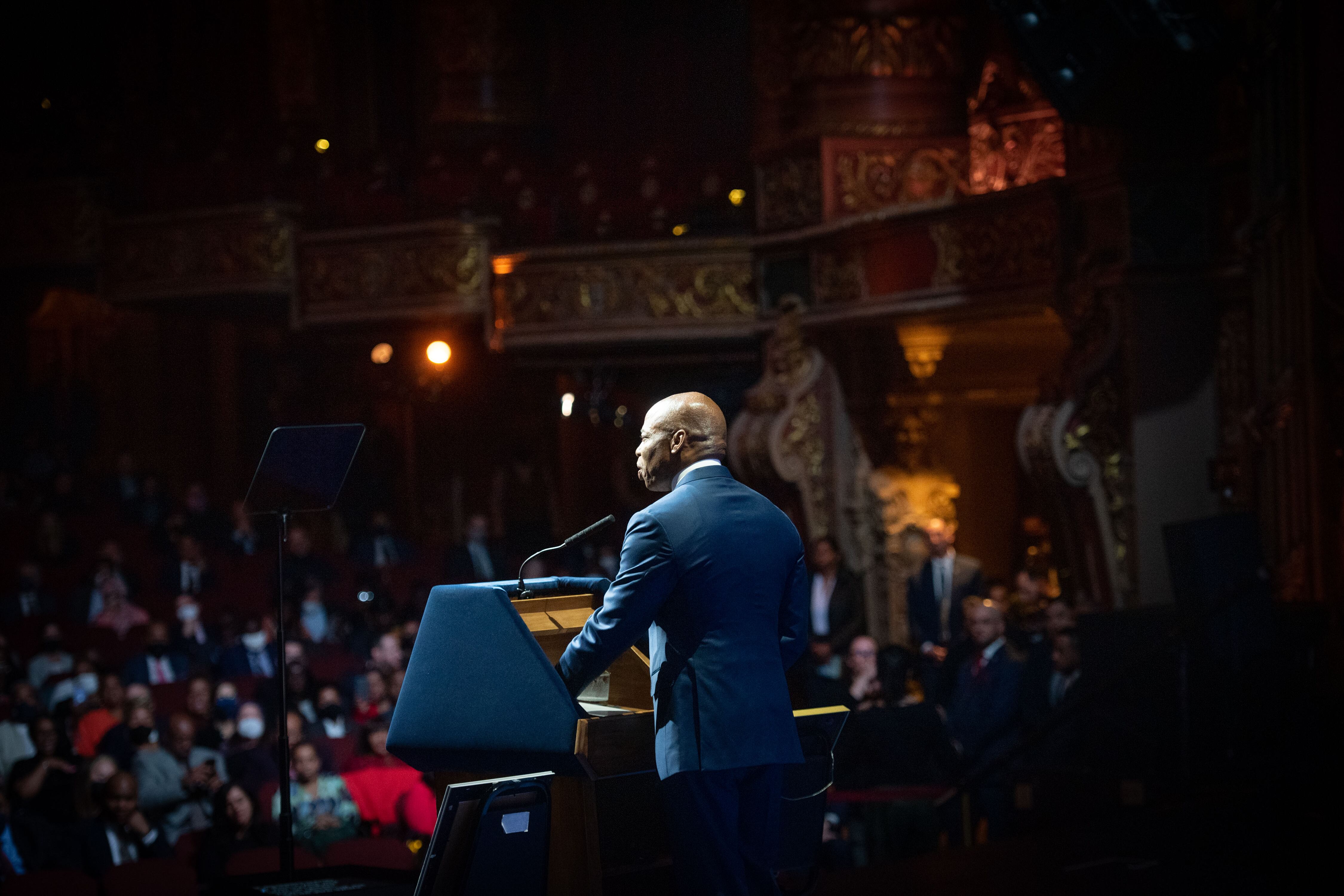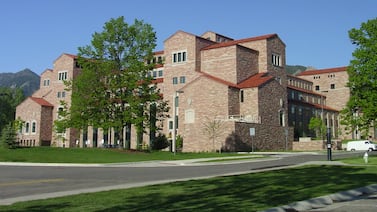Mayor Eric Adams proposed a budget Tuesday that expands summer programming for public schools and increases work opportunities for students.
His remarks about education largely centered on expanding these programs as a way to keep children out of trouble with law enforcement.
“We must do more for young people, especially when it comes to helping them get prepared and train for a career in the future, because I say this over and over again, folks: ‘If you don’t educate you will incarcerate,’” Adams said during a speech at Brooklyn’s Kings Theatre, where he highlighted his first 100 days in office.
But some big questions remain about this administration’s spending plans. It’s still unclear how the city will spend the remainder of $7 billion in federal COVID stimulus funding on New York City’s school system. The de Blasio administration had planned to spend $3.1 billion in stimulus funding this fiscal year, but just half of that money had been spent by the first week of March, according to a recent comptroller’s report.
Those federal dollars are a part of the mayor’s $31 billion education plan in this budget, though City Hall officials did not immediately say how much they’re expecting to use next fiscal year. This budget will be the first Adams negotiates with the City Council, as he seeks to extend his control over the nation’s largest school system.
Tuesday’s proposal — known as the executive budget — comes two months after he presented the preliminary budget that outlined spending cuts at the education department. That included reinstating a policy in which schools must return money if enrollment decreased. It also includes cuts in department jobs by eliminating thousands of vacant positions and assuming jobs won’t be filled as student enrollment drops.
One new addition between the February plan and Tuesday’s version: the city is expecting to save $100 million because there are fewer education department staff on the payroll, according to a city budget official. While it wasn’t immediately clear, this could include savings from the roughly 900 education department staffers who were fired after not getting vaccinated.
Adams and his team will negotiate the budget with the City Council, and it must be approved by July 1, the start of the new fiscal year.
Here are highlights from the mayor’s plan released Tuesday.
Summer programming and career pathways
As previously announced, the mayor wants to expand the city’s summer programming known as Summer Rising by 10,000 more elementary and middle school students, reaching a total 110,000 and 210,000 across all grades. That effort — which is a partnership between the education department and the Department of Youth and Community Development — will cost $350 million for grades K-8, according to a news release from City Hall.
About 45,000 students signed up on Monday, the first day to enroll, said Nathaniel Styer, a spokesperson for the education department.
Expanded programming can be tough for schools to accomplish. The rollout of last year’s expansion was messy with several decisions left to the last minute, including transportation for homeless students and children with disabilities. Still, nearly 100,000 K-8 students participated, as well as 80,000 high schoolers, and some saw it as a good transition to in-person instruction after two school years of remote learning.
Adams has also proposed expanding the Summer Youth Employment Program, or SYEP, to 90,000 total slots, which are available to youth ages 14-21, and another 10,000 jobs through other city programs. SYEP, however, is not available for students who are undocumented. The proposed expansion will cost $79 million.
Separately, the mayor has proposed spending $33 million in new “career pathways” programs. According to budget documents, the education department would create 25 new pathway programs in “high-growth sectors” like healthcare and information technology.
COVID stimulus spending on new dyslexia supports and bilingual education programming
By the end of this school year, city officials could still have roughly $4 billion in COVID stimulus funding for schools to spend until the 2024-2025 school year. It could have even more if the department underspends what the former mayor’s administration had planned, for academic recovery, extra special education support, and other needs.
City officials still haven’t outlined a detailed plan for how the education department will spend remaining federal funds. On Tuesday, a budget official said that this budget proposal is just “the first crack” at how stimulus dollars may be used.
Budget documents offered some clues of what could be funded by stimulus dollars. Under Adams’ proposal, some stimulus-funded programs would include the expansion of Summer Rising, the recently announced expansion of gifted and talented programs, and the creation of more career pathways for middle and high school students.
In addition to those, Adams wants to spend $7.4 million over the next three years to “fund new dyslexia screening sites and literacy programs.” Budget documents say the city plans to use stimulus funding to expand “access to supports” throughout the school system and open two dyslexia schools in Districts 5 and 7, in Harlem and the Bronx, respectively, but it wasn’t immediately clear if Adams’ remarks were about this.
Earlier this year, Chancellor David Banks said the city will open a school for students with dyslexia but offered no other details, including where it would be or how students would be admitted.
In his speech, Adams also highlighted spending $11.2 million on bilingual programming. According to budget documents, city officials want to use stimulus funding to launch 50 new bilingual education programs in 2023, but neither officials nor budget documents expanded on where those programs would go.
The city has been under a yearslong, state-issued corrective action plan to improve how it educates students learning English as a new language. State officials have charged that the city does not have enough bilingual programming for its English learners, and in a letter sent to the city last August, state officials said they were “extremely dismayed and disappointed” by the lack of such programs.
Other initiatives using federal funds would include “improving response time” for families seeking translation and interpretation services — a huge concern among advocates for English language learners and immigrant families — though it’s unclear how much would be spent on such an initiative.
Reema Amin is a reporter covering New York City schools with a focus on state policy and English language learners. Contact Reema at ramin@chalkbeat.org.
Correction: This story initially said Summer Rising would cost $101 million, per a city press release. Officials later clarified that the city budget is allocating that amount to it, but another $249 million is being paid by stimulus funding and tax levy dollars.





